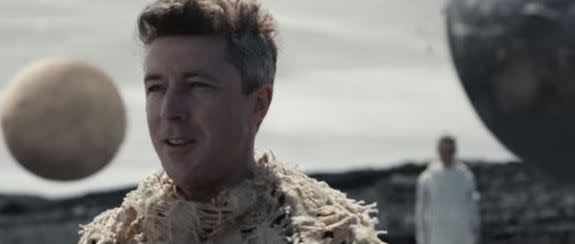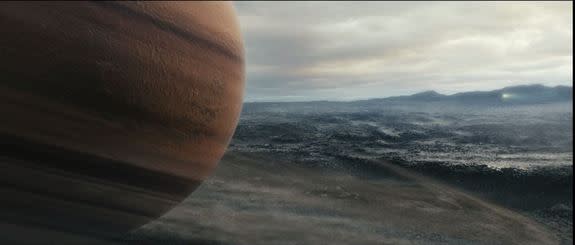Aiden Gillen, Littlefinger on 'Game of Thrones,' Stars in Comet Video
As the hit HBO series "Game of Thrones" wraps up its fifth season tonight (June 14), remember that you can see Aiden Gillen (who plays the weaselly Littlefinger) in a short science fiction film about the European Space Agency's Rosetta spacecraft.
The comet short film "Ambition," which ESA released last October ahead of Rosetta's release of its Philae lander, takes place in a strange and distant future and features two characters who can apparently manipulate matter with their minds (or some unseen technology). The interaction between a teacher (Gillen) and his student (played by Aisling Franciosi) is used to explain how the Rosetta spacecraft, which is currently orbiting comet 67P/Churyumov-Gerasimenko, will help scientists learn about the history of the Earth and the solar system.
In "Game of Thrones," Gillen's character Littlefinger is delightful in just how slimy and conniving he can be. In "Ambition," he plays a wise authority figure, and helps build the mystical and inspirational tone of the film. [Europe's Rosetta Comet Mission in Pictures]
"For a long time the origins of water, and indeed life, on our home planet remained an absolute mystery," Gillen said in the film. "So we began searching for answers beyond Earth. Where could all this water have come from? In time we turned to comets. One trillion celestial balls of ice, dust, complex molecules left over from the birth of our solar system. Once thought of as messengers of doom and destruction. And yet so enchanting, that we were to catch one. A staggeringly ambitious plan."
Rosetta is the first to observe a comet at close proximity as it approaches the sun, and the first to investigate the rocky nucleus of a comet over an extended period of time. It is scheduled to study 67P/C-G until December 2015. Its accompanying probe Philae landed on the surface of the comet on Nov. 12. Photos by Rosetta near the surface of the comet have revealed an eerie, haunting landscape.
"We harnessed whole planets and their gravity to chase down the comet," Gillen continues. "So many things could have gone wrong. A failure at launch, an error in the calculations, collisions. So many unknowns. With the technology we had back then, we may as well have been shooting from a slingshot."
The Rosetta spacecraft took 10 years to travel more than 3.97 billion miles (6.4 billion kilometers) to reach 67P/C-G. The trip required multiple gravity assists (using the gravity of a large body, like a planet, to gain speed), to reach the comet, which orbits between 497 million miles (800 million km) and 115 million miles (186 million km) from the sun.
"And tell me," he asks his young protégé, "What was it all for?"
"Knowledge," she responds.
"Yes, but we also wanted to show what was possible."
If seeing Gillen and Franciosi in ESA's "Ambition" isn't enought, you can also see a behind-the-scenes look here.
Follow Calla Cofield @callacofield. Follow us @Spacedotcom, Facebook and Google+. Original article on Space.com.
'Ambition': Rosetta Inspired Sci-Fi Short - Behind The Scenes Video
Stunning Rosetta Probe Inspired Sci-Fi Short - Starring GoT's Aiden Gillen | Video
Copyright 2015 SPACE.com, a Purch company. All rights reserved. This material may not be published, broadcast, rewritten or redistributed.


